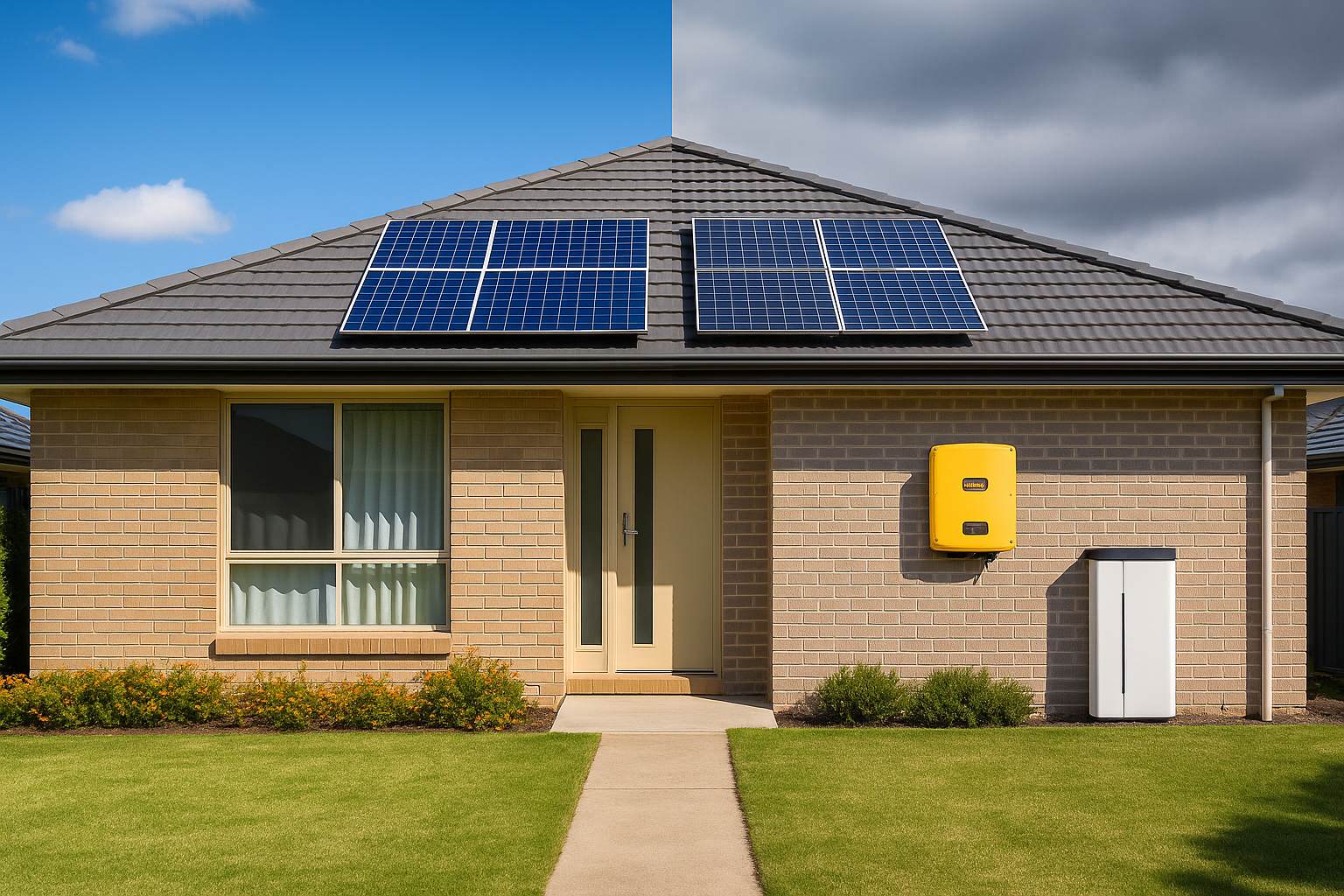Solar power is one of the most reliable and efficient ways to reduce energy costs in Australia. However, seasonal changes affect solar energy production — sometimes more than homeowners expect.
From shorter winter days to cloudier conditions, your system’s output naturally fluctuates throughout the year. The good news? With a few smart adjustments, you can keep your system performing at its best no matter the season.
Let’s explore how solar output changes with the seasons and what you can do to make the most of your investment all year long.
How Seasons Influence Solar Energy in Australia
Australia enjoys some of the world’s highest solar potential, yet sunlight availability varies significantly between summer and winter.
Here’s what happens through the year:
- Summer (Dec–Feb): Long days and high solar angles mean maximum energy production. Panels operate near peak output, though heat can slightly reduce efficiency.
- Autumn (Mar–May): Output remains strong but starts to drop as daylight hours shorten. Cooler temperatures help panels perform efficiently.
- Winter (Jun–Aug): Short days and lower sun angles reduce daily generation by 30–50%. Cloud cover also increases in southern regions.
- Spring (Sep–Nov): Conditions improve again, with mild weather and longer days providing an ideal balance for solar performance.
Although these fluctuations are natural, proactive maintenance and smarter energy management can help you stay ahead.
1. Track Your Solar Performance Year-Round
The first step in managing seasonal changes is knowing exactly how your system performs throughout the year.
Tools like Solar Analytics give you real-time performance insights and alerts if your system is underproducing. These tools also show how weather patterns, shading, and temperature affect generation.
Pro Tip: Compare each month’s energy output to your expected average — if performance drops outside of normal seasonal variation, it may be time for maintenance or a panel clean.
2. Schedule Seasonal Maintenance and Cleaning
Dust, pollen, leaves, and bird droppings build up faster in some seasons, especially during dry or windy months. Even a small amount of grime can reduce output by 10–15%.
Here’s a good rule of thumb:
- Autumn: Clean panels after leaf fall.
- Spring: Remove pollen and check for nesting birds.
- After summer storms: Inspect for debris or shading damage.
Scheduling a quick inspection every six months ensures your panels receive maximum sunlight and perform efficiently.
3. Adjust Energy Use Based on the Season
Seasonal changes don’t just affect how much energy your system produces — they also influence when you should use it.
During summer, your system may produce more electricity than you can use. Therefore, it’s the perfect time to:
- Run heavy appliances (dishwasher, washing machine, or pool pump) during the day.
- Charge your EV or home battery while solar production is high.
In winter, when production drops, focus on reducing energy waste and optimising battery storage.
To go one step further, integrate smart devices that automatically shift power usage based on real-time solar generation. Learn how in this guide:
Combine Smart Devices and Solar Power for Maximum Efficiency
4. Use Battery Storage to Balance Seasonal Gaps
A reliable battery system helps stabilise your energy supply across seasons. In summer, it stores excess energy you can use during cloudy or shorter winter days.
Smart batteries also learn your consumption patterns, adjusting charging and discharging cycles automatically for each season.
Tip: If you don’t have one yet, consider adding a battery system to improve energy independence and reduce evening grid reliance. Compare options easily at:
Request Solar Quotes
5. Optimise Panel Orientation and Inverter Settings
While most solar systems are installed with a fixed tilt, your installer can fine-tune panel angles or inverter settings for better year-round balance.
For example:
- Panels facing north produce the most consistent energy annually.
- East-west arrays generate more power in the mornings and evenings — ideal for households using energy before or after work.
If you notice major seasonal dips, ask your installer to check if any nearby trees, new structures, or roof changes are shading your panels during certain months.
6. Monitor for Weather-Related Efficiency Changes
Temperature, humidity, and cloud cover can all impact how efficiently your panels convert sunlight into electricity.
- Heat: Reduces efficiency slightly but increases daily output overall.
- Cold clear days: Panels perform best in cooler conditions.
- Overcast weather: Still produces 10–25% of normal output.
Using tools like Solar Analytics helps you visualise these trends and adjust accordingly.
7. Plan for Energy Storage and Smart Upgrades
If you’re serious about energy independence, now’s the perfect time to consider upgrading your system. By combining solar with modern technology — such as smart meters, AI-powered monitoring, and efficient inverters — you can stabilise performance regardless of the season.
A few small upgrades today can lead to major long-term savings and greater system reliability.
Start by reviewing your setup with trusted local experts:
Request Solar Quotes
Your Next Steps
Seasonal changes may influence solar energy, but they don’t have to limit your results. By tracking performance, keeping your panels clean, and using smart management tools, you can ensure your system runs efficiently every month of the year.
Step 1: Monitor performance with Solar Analytics
Step 2: Automate energy use → Combine Smart Devices and Solar Power for Maximum Efficiency
Step 3: Compare battery-ready quotes → Request Solar Quotes
With the right habits and technology, your solar system can deliver strong, consistent performance — rain or shine.

